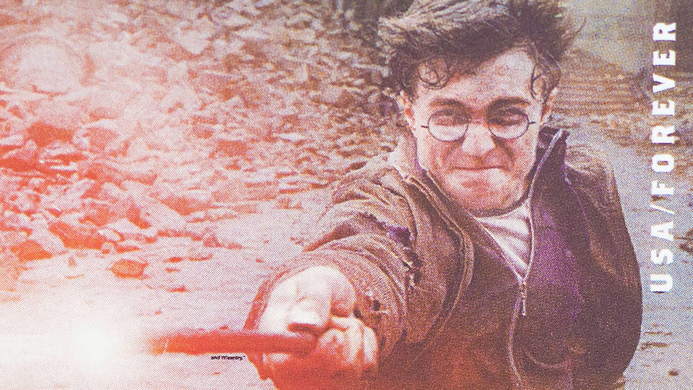It was when he was reading Harry Potter that Frédéric Dalsace first came up with the novel idea of a dynamic, evolving brand–consumer relationship. Although there may be many reasons for the success of J. K. Rowling's books about the famous wizard, he is convinced that the fact he ages (unlike most traditional heroes) enables better development of the character and encourages greater reader loyalty. So, in that case, why not also create brands that mature with their customers? Frédéric Dalsace tells us all about his Harry Potter marketing concept…
WHAT ARE THE LIMITATIONS OF TRADITIONAL BRAND MANAGEMENT?
Most companies target a specific age group. So, cosmetics for women between the ages of 45 and 55 will be progressively abandoned by individuals leaving the age group and adopted by those entering it. Marketers therefore target specific groups: they focus on a population's characteristics and take their age— but not the fact that they age—into account. This then means that they have to ‘swim back upstream’ every year. There are two possibilities in this traditional approach: either the oldest people in the age group—though they can be as young as 6!—leave the brand of their own volition, or they remain loyal to it. The first choice implies constantly having to find new customers. New customers are generally sought amongst the youngest customers in the target group—marketing campaigns are used to target this group, but they also tend to push the oldest customers outside the target group. Many so-called ‘generational’ brands, such as Club Med and Gap have experienced this: rather than allowing the brand to evolve with loyal customers, they have endeavoured to maintain a brand positioning that targets a particular age group. The de facto marketing objective is to find new customers to replace those that have left the group. The legitimacy of such an approach is often questioned because of the cost of finding new customers, which is a lot higher than the cost of keeping them. Conversely, the oldest customers in the age group can remain loyal to the product. But what initially appears to be good news can, in fact, pose a serious and long-term threat to the brand's survival, as it may progressively lose its power to attract the youngest customers in the group. In other words, there's a risk that the brand will become ‘naff’. Vigorous efforts are then made to reposition the brand and target a younger sector of the population. L’Oréal successfully did this when it became concerned about its aging Lancôme brand, victim of Isabella Rossellini's success as the brand's spokesmodel. Here too, the cost is high and success isn't necessarily assured.
ARE YOU SUGGESTING THERE SHOULD BE MORE DYNAMIC BRAND MANAGEMENT?
We are suggesting that companies create brands that no longer appeal to successive generations, but which follow the evolution of a particular generation. Just as the famous sorcerer's apprentice Harry Potter grows with his readers, brands can mature with their consumers. This is what we call Harry Potter marketing. Let's imagine, for example, that instead of producing cosmetics for women between the age of 35 and 45, they are targeted at women born between 1965 and 1975. The fact that the target doesn't change allows marketers to strengthen the link between the consumer and the brand, particularly through generational marketing campaigns that use familiar music, symbols, icons, and so on. The brand will in this way adapt to the target's characteristics and their changing needs and habits by modifying the product's composition; and the corollary of this is greater customer loyalty amongst those targeted. Club Med, which for several years suffered from the ruinous effects of a ‘classic’ marketing strategy—it was out of sync with the changing needs of its original customers—, has recently adopted such an approach. One of the Group's slogans is: ‘Club Med has changed with the times to cater for all your needs’. The Group is refocusing on its original customers, but is taking their current aspirations into account: the standard comfort of the first clubs has been replaced by luxury holidays for people who have aged… and whose purchasing power has increased considerably. An upmarket ‘five trident’ club has just been inaugurated.
WILL HARRY POTTER MARKETING SIGNAL THE PROGRAMMED DEATH OF BRANDS?
And why not? This is of course, a taboo subject in marketing …Too many marketing directors dream of leaving a lasting imprint by creating ‘eternal’ brands … A few brands survive for a long time—after all, no one can say whether they're going to be eternal—, but how many brands, which cost a fortune to launch, have a very limited life? Accepting that a brand can age and disappear is also a way of looking to the future. Brands that try to remain young at any cost generally don't succeed in doing so, and fail to attract new generations of customers. For example, Gap, which enjoyed considerable success in the 1990s, struggled to survive into the new millennium: the brand wanted to remain young at any cost, rather than adapt to the preferences of its most loyal customers. In allowing a brand to age by reinvesting part of the profits generated in a new brand aimed at younger customers, Harry Potter marketing encourages the exploration of new ideas. The death of a brand doesn't necessarily mean that it has failed, as the best-selling brands can be re-engineered and seduce new generations, like the Fiat 500, the New Beetle, and the Mini! This is why the presence of a phoenix (Fawkes) in the Harry Potter books is also interesting...
HOW DOES ONE ACTUALLY CREATE A HARRY POTTER BRAND?
Harry Potter marketing can't be used for all brands. To be ‘Potterable’, brands must fulfil two conditions: on the one hand, the associated products must have the capacity to encourage a high level of customer involvement and, on the other hand, there must be a considerable physiological evolution in customer's needs. But, companies are not obliged a priori to adopt a Harry Potter marketing strategy to launch a brand: the right strategy aims primarily to create a strong brand that will capture the hearts of a generation of consumers. The question of whether it is suitable for Harry Potter marketing comes afterwards. Many companies do actually practice Harry Potter marketing without knowing it. The Guide du Routard (collection of travel guides) is a good example of this: since its creation, the famous guide's logo has evolved (he's had his hair cut, his moustache is shorter, etc.) and prestigious addresses have been added to the guide to adapt to the change in the needs of its original users. Further proof that Harry Potter marketing isn't just a theoretical concept was provided when we showed L’Oréal our work—they were particularly interested in the concept.









